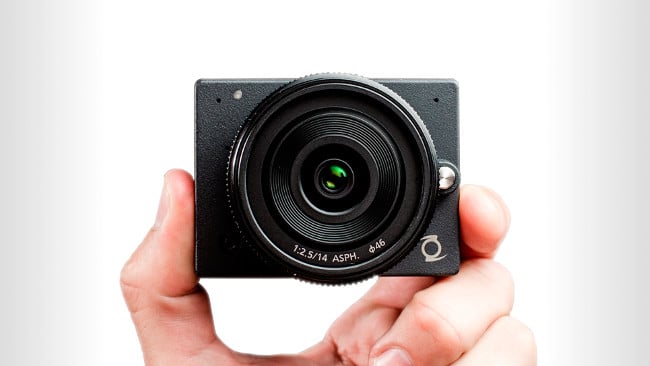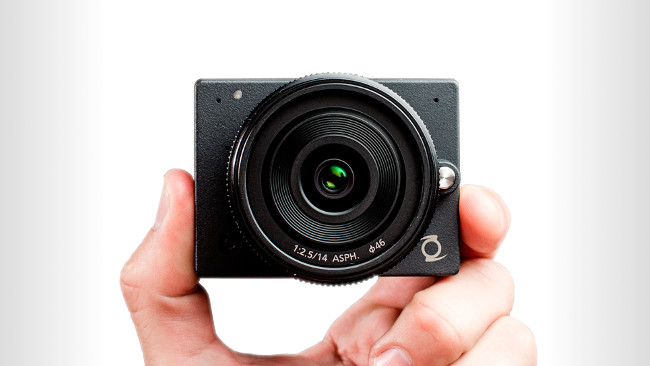
 Z Camera E-1
Z Camera E-1
The Z-Camera E-1 was a head turner in miniature form at NAB and a successful Kickstarter project from 2015 that has made its way on to the showfloor with impressive speed.
Much of the Las Vegas Convention center has been split into identifiable categories, with drone makers commingling in close proximity, virtual reality getting its own Pavilion, not to mention audio, grip, lighting, etc. But the back of Central Hall housed a hodgepodge of booths with very little relation to each other, and it was in here that people in the know found the Z Camera E-1.
When I first had the Z Camera E-1 in my hand, I wasn't entirely sure what I was looking at. First off, it's tiny but solid. For exhibition, the E-1 had an Olympus pancake lens attached. I immediately thought that the company must have had a partnership with Olympus for a fixed lens, until I noticed a lens release button. I pressed the button and unscrewed the pancake, revealing a M43 sensor. The little box (2.96" x 2.20" x 1.97") is barely bigger than the M43 mount - if you can imagine drawing a square around the mount ring, then you have an ideal of what it looks like.
Apparently, this tiny shooter comes equipped with the same sensor as the Panasonic GH4. It also shoots 4K DCI at 24 fps, 4K UHD at 24, 25 and 30 fps, 1080 at 60 fps and 720 at 240 fps, which is pretty amazing, considering we're talking about a camera that you could put almost anywhere.
There is an small 320 x 240 LCD screen at rear, but it's probably a better tool for framing, as opposed to keeping focus. Users also have the ability to wirelessly connect their iOS and Android devices via app, making their smartphone screens a secondary viewer, albeit with some latency. The E-1 also has a continuous autofocus system, but that's the type of function that really needs to be reviewed before we comment on it.
The $699 price tag makes it nearly an expendible for all but the most budget-conscious productions. I could see this camera being a great tool for reality TV and for documentarians, as the ultra-diminutive form factor may allow it to go unnoticed in circumstances when discretion is preferred.
Along with the performance of the continuous autofocus, we'll also reserve comment on the purported low light capabilities (max ISO 102,400, "high image quality" up to ISO 6400), which may have been improved over successive firmware updates since the E-1's introduction last year.
Hitting its targets
Perhaps the most impressive aspect of the Z Camera E-1 may be its history and the credibility it has built up over such a brief time. I know that may sound strange, but the E-1 began life as a Kickstarter project, raking in over $350K against a $50K funding goal. And the company was able to hit the expected shipment date of November 2015, just two-to-three months after the campaign closed on August 15th. Everyone who pre-ordered the E-1 through the Kickstarter campaign received their cameras in November, save for two orders that were hung up by customs. Hitting shipment estimates, for a new crowdfunded product, is pretty rare and the company should receive kudos for launching a campaign knowing exactly what it needed to do to deliver its product on time.
The creator of the E-1, Jason Zhang, formerly worked for Ambarella, the company that supplies GoPro's chipsets, further adding to Z Camera's credibility.
We'll update this story when we get the Z Camera E-1 in our hands for a proper review.
Tags: Production


Comments